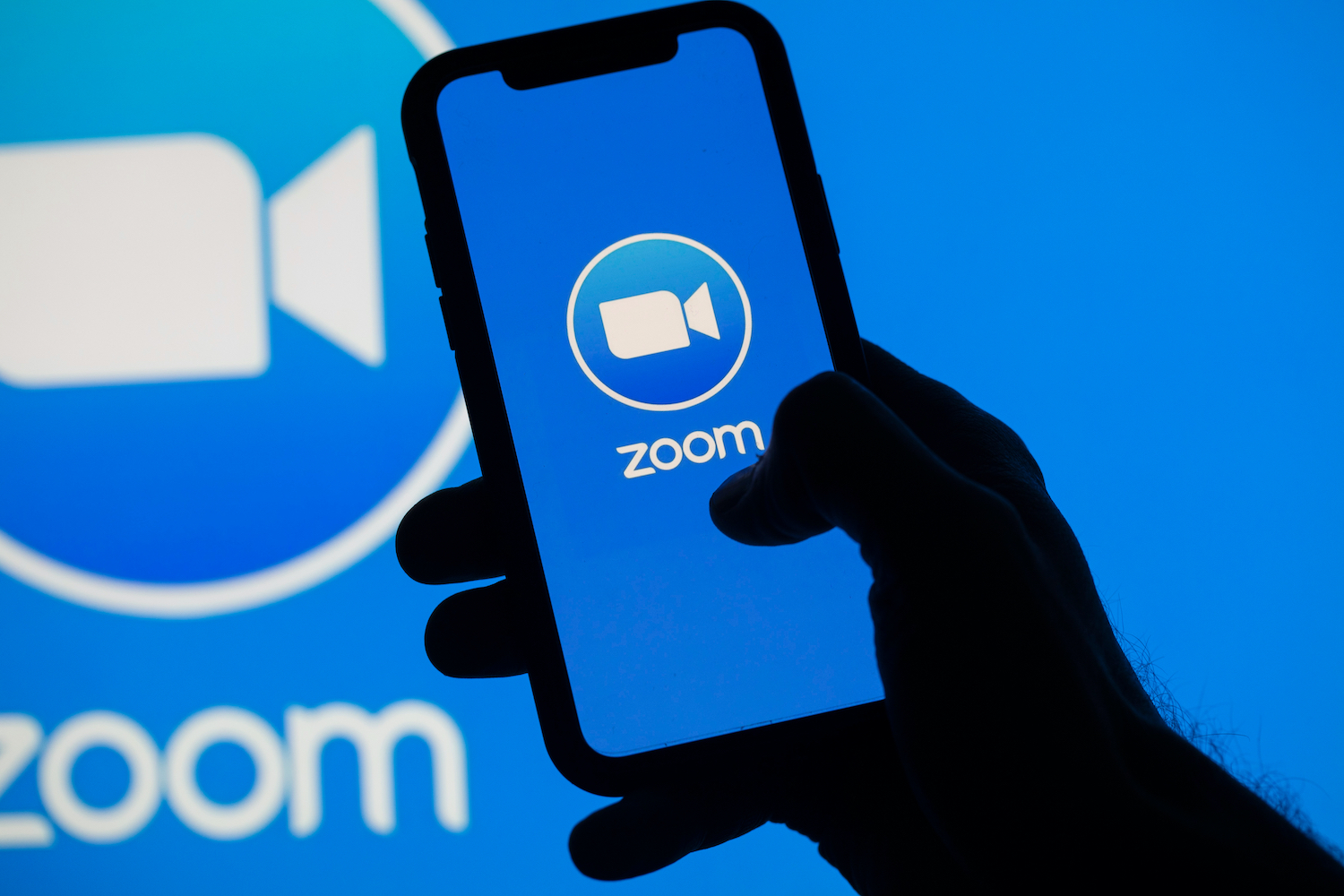Best Samsung TVs in 2025 from budget 4K QLED TVs to premium 8K TVs
Our pick of the best Samsung TVs QLED 4K smart TVs we've reviewed.
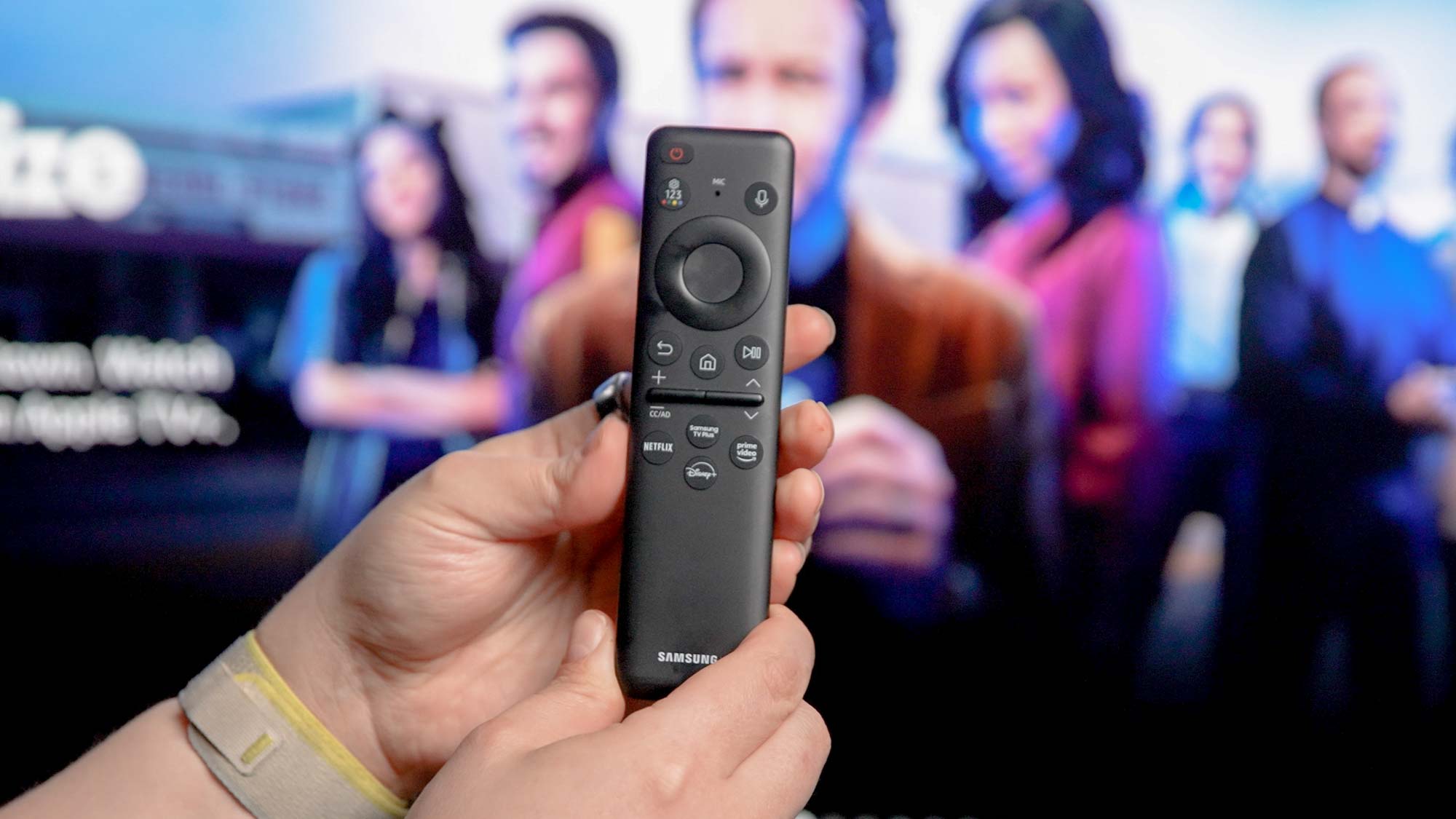
The best Samsung TVs are some of the most advanced displays in the market with loads of features on offer and the crispest picture quality money can buy. As one of the leading manufacturers in the TV space, Samsung's TV releases are some of the most beloved OLED and QLED TVs in the market.
It is, after all, one of the leading OLED TV retailers now going 18 years strong (and counting). It comes as no surprise that it makes some of the most feature-rich and picturesque TVs on the planet, corralling firsts in many categories, like the inclusion of cloud gaming services in Xbox Game Pass and Nvidia GeForce Now. Samsung isn't just some one trick pony, after all.
Its OLED TVs also tend to push out some of the best metrics in our testing, usually straddling the line against Sony and LG sets. Meanwhile, on the Neo QLED front, Samsung has on offer some serious zeal in the form of its QN90D, which we adored for its incredible brightness metrics and contrast. And don't even get me started on its 8K behemoth in the QN900D, one of the highest-rated TVs in our testing last year. It's a true stunner.
Below you'll find a comprehensive list steering you in the right direction when it comes to finding the best Samsung TV. With our years of TV testing and hundreds of TV reviews, we know just how to pick them. Whether it's multiple HDMI 2.1 ports for hardcore gamers or an ATSC 3.0 tuner for NextGen TV and 4K broadcasts, we've underscored the best Samsung TVs for every type of buyer. Read on to find the one that's right for you.
The best Samsung TVs you can buy now
Why you can trust Tom's Guide
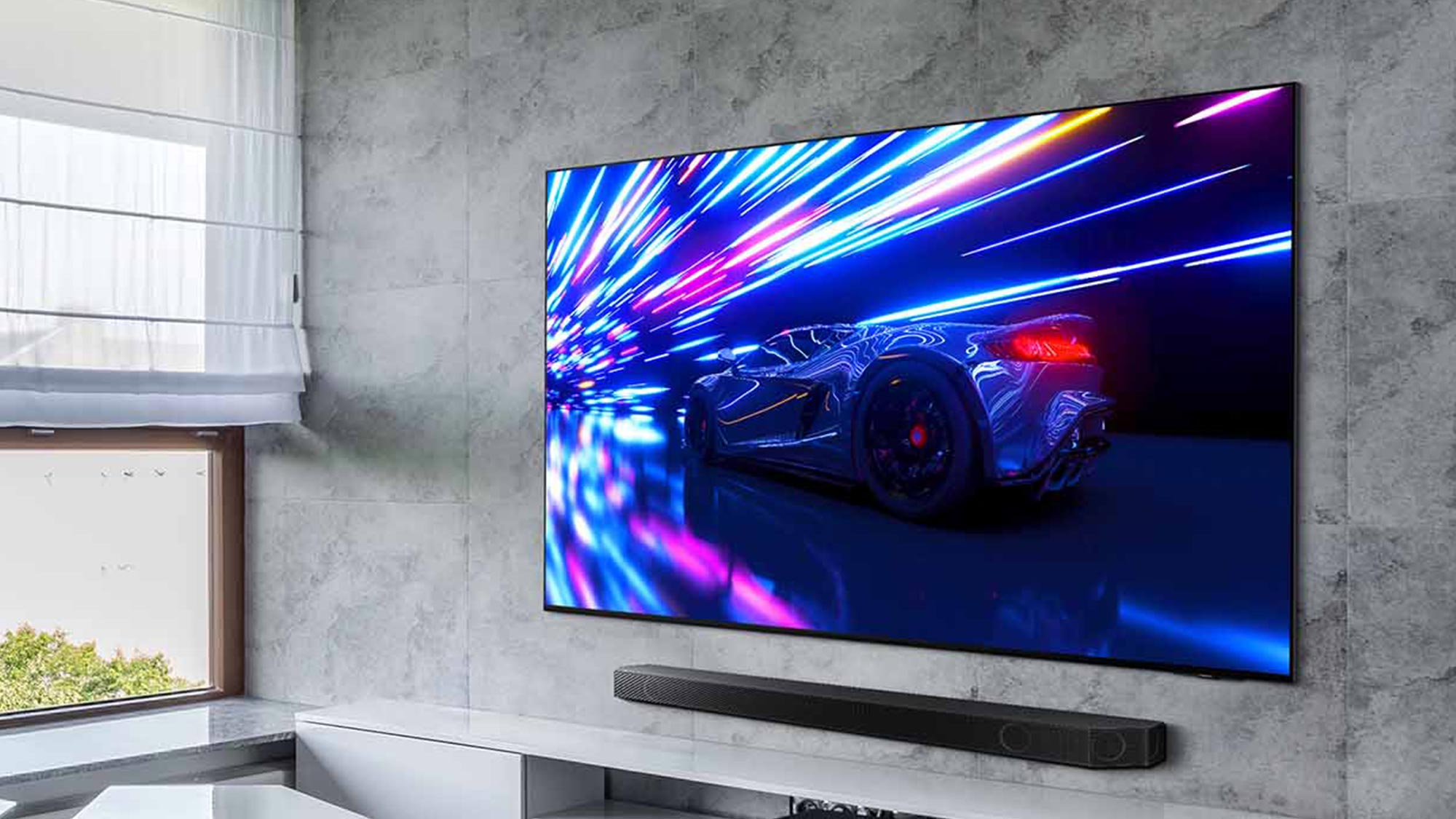

Specifications
Reasons to buy
Reasons to avoid
Samsung's S95D is its 2024 flagship OLED TV offering, allotting not just a string of interesting new components, namely AI upscaling and amplified audio, but also a slew of gaming enhancements in its Gaming Hub. It's definitely on the more premium side, but if you're willing to spend big on a new entertainment setup, the S95D is surefire hit — especially if your aim is to watch primarily sports content.
One of the key features on the Samsung S95D is its access to the Gaming Hub, a world of wonder filled with cloud gaming services, like Game Pass, to even Samsung-made games. But even more appealing is the S95D's anti-glare coating, which gives it this matte-black shine to combat ambient lighting with ease. And it looks like it belongs in the museum all the same.
When looking at the best of the best, you can expect quite a high premium.
Read our full Samsung S95D OLED review.


Specifications
Reasons to buy
Reasons to avoid
With the Samsung QN95B Neo QLED TV, Samsung once again proves why it’s the QLED TV king. Thanks to best-in-class brightness, cable management convenience and impressive performance across most content genres, the QN95B is a tough TV to beat.
At a time when OLED TVs steal most of the hype, Samsung’s premium Neo QLED technology stands out in one big way: brightness. By introducing a Mini LED backlighting, the panel can achieve higher levels of brightness without sacrificing depth and gradations of luminance. While no Dolby Vision is a weird thing for this TV to miss out on, most people can overlook it while they’re watching their movies and shows with crisp 4K details, great color and, of course, outstanding brightness.
Read our full Samsung QN95B Neo QLED TV review or browse our Samsung promo codes


Specifications
Reasons to buy
Reasons to avoid
If you're on the hunt for a valiant display with quantum dots, the 65-inch Samsung QN90D Neo QLED is the Mini-LED TV king thanks to best-in-class brightness and impressive performance in almost every genre thrown its way. It's one of our favorite QLEDs from 2024, offering the range of ports needed for intense gaming in line with stellar color performance.
One thing that makes the the QN90D a frontrunner for best Samsung TV is its incredible contrast. And, unlike other Mini-LEDs in its range, the QN90D has terrific off-axis viewing. We also praised its high brightness, especially in HDR, which hits a peak of 2,024 nits. That's truly bonkers!
It doesn't stop at just picture performance as the QN90D has stellar audio, as well. It comes with built-in Dolby Atmos and Object Tracking Sound+, which makes audio tuning all the more streamlined for everything from sports to general entertainment. And with its Gaming Hub, anyone can play games directly on the TV using popular cloud streaming services like Xbox Game Pass.
Tizen OS also sees a major revamping on the QN90D. It's a step in the right direction, proving much better than LG's webOS and Amazon's Fire TV. Samsung's dedicated to updating its TVs for the next five years, so the QN90D will be aptly upgraded for those hoping not to get left in the dust by 2025 displays.
Read our full Samsung QN90D Neo QLED TV review or browse our Samsung promo codes
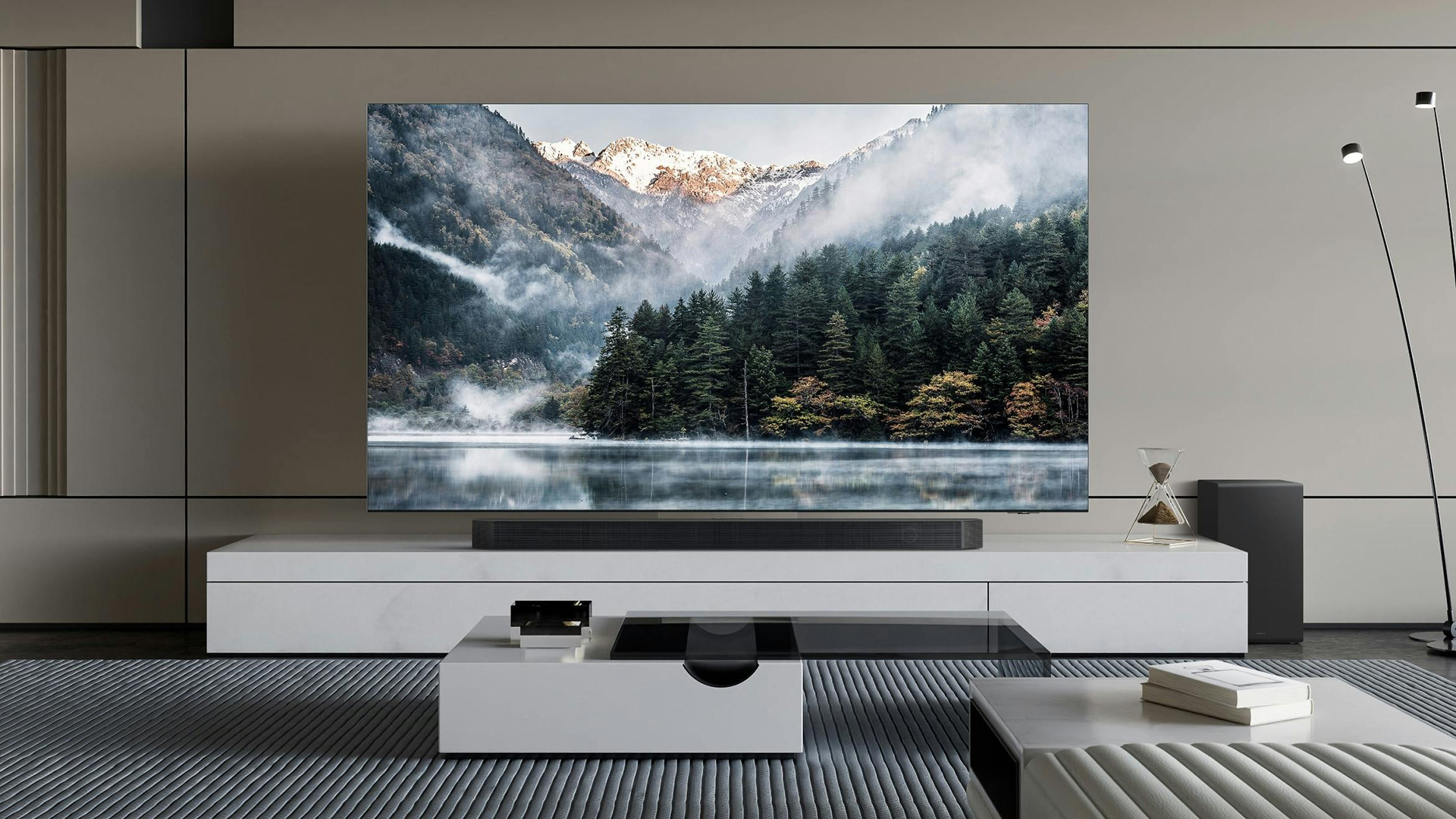

Specifications
Reasons to buy
Reasons to avoid
The Samsung QN900D Neo QLED 8K TV perfectly encapsulates the beauty of 8K resolution. It packs a ton of features into its most robust platform, letting users game in upscaled 8K and watch movies and shows like they have never seen. We praised its upscaling potential, leveraging that NQ8 gen 2 processor with pizzazz in its to flagship products. It's practically bordering on overkill.
In our QN900D review, which we gave a perfect score, we adored its incredible brightness and improved Tizen OS interface. In our testing, the QN900D hit a peak luminance of 2,338 nits, which is incredible for an QLED TV. It's also got relatively low input latency at 10.4ms, making it perfect for intense gaming.
Samsung's also one of the few manufacturers still making 8K TVs as both LG and Sony pulled out of the higher resolution race not too recently. That makes the QN900D not only one of the best Samsung TVs but also among the only 8K TVs worth its salt right now. And it's made all the better thanks to Samsung's super fluid Tizen OS, which has an incredibly extensive Gaming Hub built for cloud gaming. What more could you ask for?
Maybe a cheaper price as it does come in at a starting $4,999 for its 54-inch model.
Read our full Samsung QN900D Neo QLED 8K TV review.

Specifications
Reasons to buy
Reasons to avoid
The Samsung 65-inch Class S95B OLED 4K Smart TV (QN65S95BAF or QE65S95B in the UK) is the company's first TV to combine OLED with quantum dots, resulting in a QD-OLED TV that promises the best of both technologies: superior color, brightness, and contrast in a single package.
That marriage is the tiniest bit rocky, though, thanks to its effects on the set’s blacks (which should be any OLED set’s crowning glory), and the superannuated Tizen operating system that leaves this brand-spanking-new set showing its age right out of the box.
That said, with top-tier picture quality, surprisingly good sound, a forward-thinking remote control, terrific gaming capabilities, and an eye-catching design, it's still an excellent option in 2022.
Read our full Samsung S95B OLED 4K TV review.
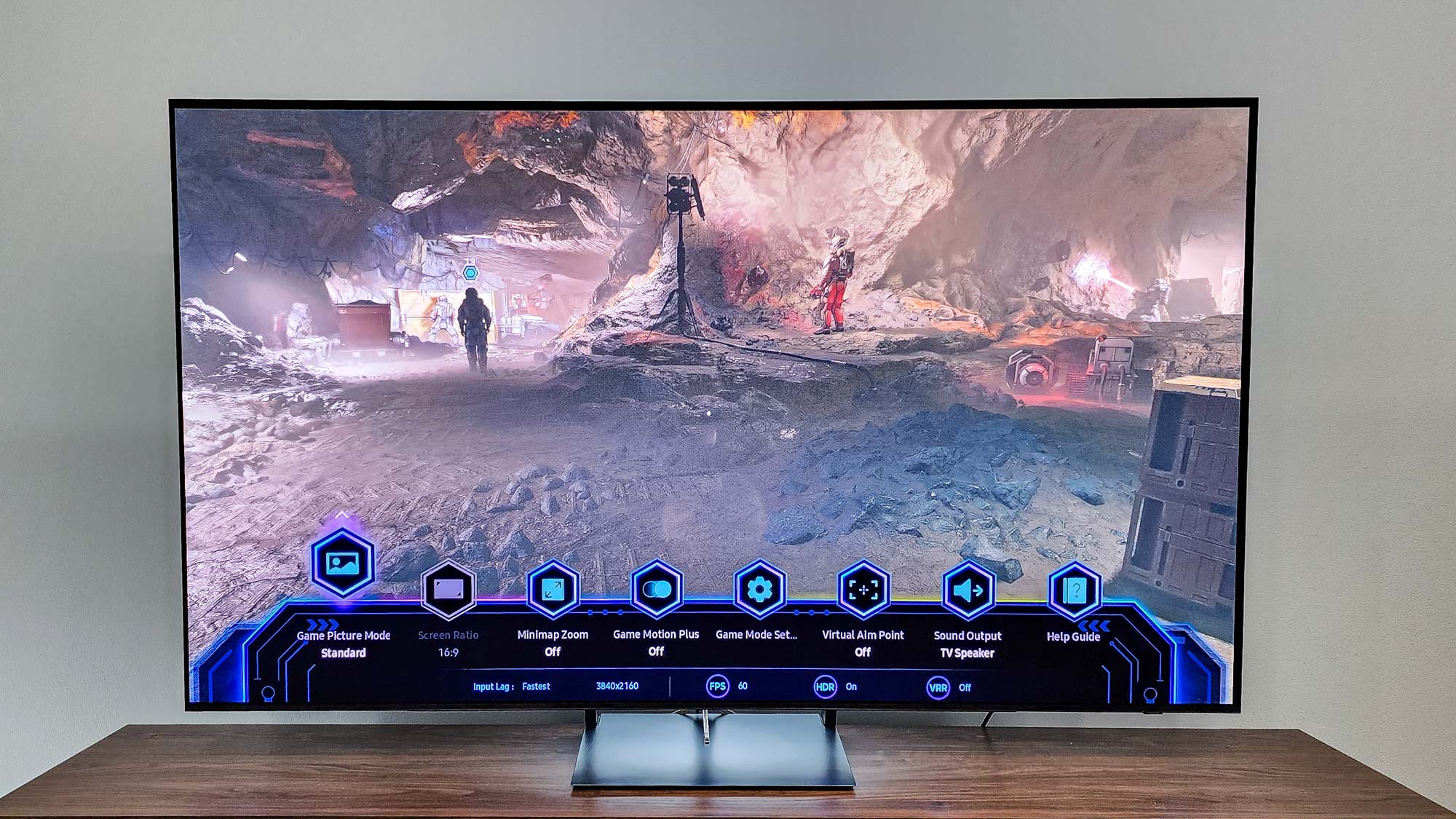
Specifications
Reasons to buy
Reasons to avoid
The combination of quantum dots and OLED panels has been a game-changer for TVs, with the rich, precise colors and searing brightness of the former an ideal marriage to the flawless blacks and near-infinite contrast of the latter. Though most manufacturers have explored this partnership, few have gone as far as Samsung — and even Samsung has never made as good a case for it as it has with the S90C.
This is an upper-midrange set that looks like it ought to be far more expensive than it is. It plays everything about as well as it could be played. Like almost all of Samsung’s recent sets, the S90C boasts impressively low input lag (9.2ms) and with HDMI 2.1 allowing for VRR, ALLM, and up to 144Hz rates, you get just about everything you would ever need from a gaming TV.
Read our full Samsung S90C OLED review
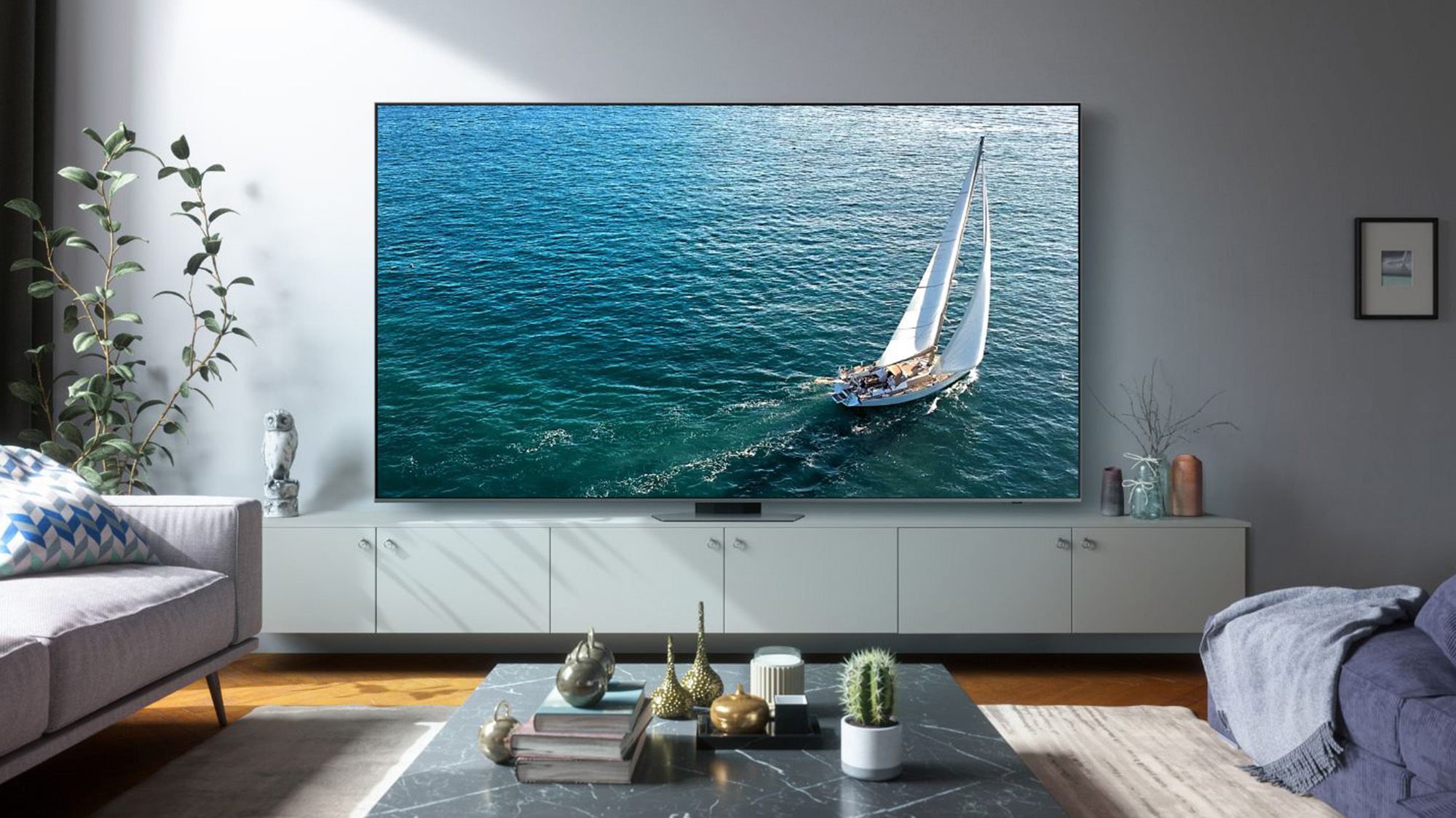
Specifications
Reasons to buy
Reasons to avoid
Despite being in the middle of Samsung's 2023 TV lineup, the Q80C still remains one of the best Samsung TVs due to its incredible design and performance. At just around $1,000 for its 55-inch model, you're getting quite the range of features built on the beloved Tizen interface.
What makes the Samsung Q80C one of the best Samsung TVs is this very price to performance ratio. It's got four total HDMI 2.1 inputs, making it ideal for the best gaming PCs to leverage all 120Hz it provides.
Against major competitors in the space, Samsung has always delivered exceptional models and the Q80C is no different. With 828 nits of SDR brightness and a 99.3% coverage of the Rec709 Gamut, this TV offers a well-rounded spec for those looking to get ample 4K quality in all things entertainment.
Read our full Samsung Q80C QLED TV review.
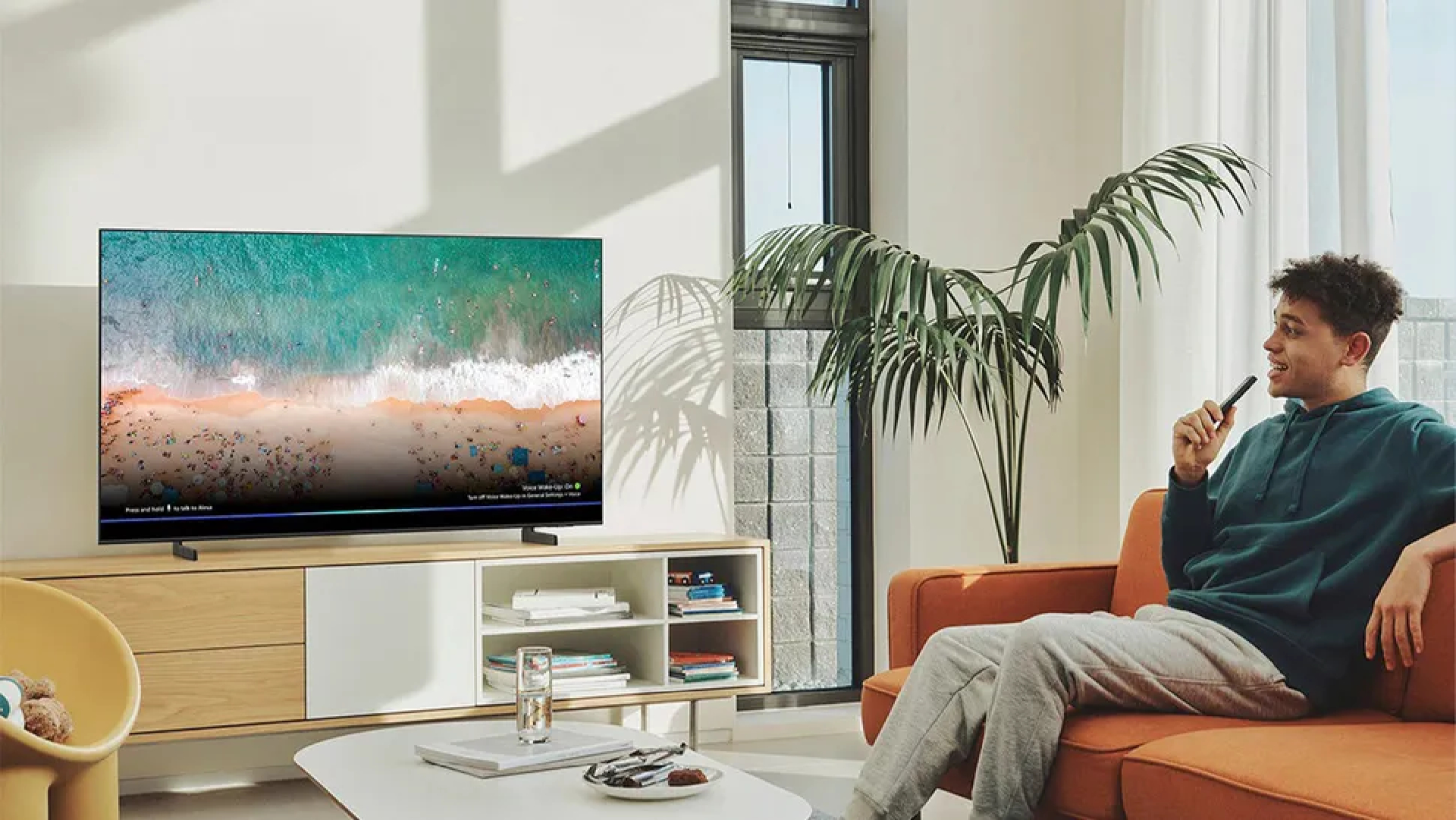
Specifications
Reasons to buy
Reasons to avoid
Taking up after the Samsung Q60B is the Samsung Q60C QLED TV, an entry-level model that stands out with some high performance numbers, like low input lag and high color accuracy, despite its budget sticker price. At just $750 (when on sale), the Q60C nets you a 9.0 input lag and a Delta-E of 1.6547, which is stunningly accurate.
Built on quantum dot LED technology, this option among the best Samsung TVs is a real steal, but don't expect it do punch up above the rest. Brightness isn't the best on the Q60C, but with a UDHA-P3 gamut coverage of 92.62 percent, you can expect some brilliant vibrancy in HDR content.
Gaming proves to be the Samsung Q60C's most impressive use case, due in large part to that input lag that sits under 10ms, making this display the prime time stop for consoles as well as PC players. Still, lacking any HDMI 2.1 input is a real drag, but for one of the best TVs under $1,000, you're getting quite the coverage.
Plus, where most TVs skimp and miss the boat entirely (thus requiring one of the best soundbars to go alongside them), the Q60C has a really solid speaker system. It may only be 20W, but definitely gets the job done for most content out there and will give you the perfect window into Netflix's ever-thriving "3 Body Problem."
Read our full Samsung Q60C QLED TV review.
How much do Samsung TVs cost?
With so many TVs to choose from, there's no single price point for Samsung TVs. But that also means that there's probably a great Samsung TV that fits your budget, so long as you're willing to be flexible on features and screen size.
Top end 8K and Micro-LED models can range from a few thousand dollars up to the tens of thousands. But Samsung's 4K offerings are far more reasonable. The Samsung Neo QLED 4K TV line ranges between $1,599 for the smallest QN85A Neo QLED model, up to $4,999 for the 85-inch Samsung QN90A, the largest in the Neo QLED family.
Less expensive models, like basic LCD sets and quantum-dot models without Neo QLED's mini-LED backlight start for as little as $549 for the smallest 43-inch model and up to $3,699 for the largest 85-inch QLED model.
Check out the full Samsung 2021 TV lineup for more models and details on pricing and size options.
Before you make a purchase, check our Samsung promo codes page for the latest offers and discounts.
What is QLED?
Samsung's QLED branding is well known in the TV world, but what does it really mean? QLED is shorthand for the combination of quantum dot and LED backlight, pairing LED backlight with nano-scale crystals called quantum dots that respond to light by producing additional light within a certain range of the color spectrum.
By combining these different hues of quantum dots with the triggering effect of the backlight, Samsung is able to boost the color gamut and brightness of the TVs, offering a major improvement over traditional LCD panels with LED backlight.
Samsung isn't the only manufacturer using quantum dots – these days, you can find some excellent QLED TVs from manufacturers like TCL, Vizio and Hisense. But Samsung has consistently offered the best implementation of QLED technology that we've seen, pairing it with refined backlighting control, filtering and other expert touches to deliver the best TV performance short of offering a more expensive OLED display.
Are Samsung 8K TVs worth buying?
Samsung's 8K TV selection is second to none, with multiple model lines delivering 8K picture quality at premium, mid-range and value priced tiers of affordability and features. While every 8K TV is more expensive than similarly-sized 4K models, Samsung's range of 8K QLED TVs offers choice premium features, a range of sizes and even some of the most affordable 8K options on the market.
But the bigger question is whether anyone should buy an 8K TV, and on that issue, we think the answer is no. Check out our article Should you buy an 8K TV in 2022? to learn more about the present state of 8K and why it's not worth buying yet.
- LG CX OLED vs. Samsung Q90T QLED: Which should you buy?
How to choose the best Samsung TV for you
When it comes to picking a smart TV, choosing the right brand is only part of the process. Once you've settled on getting a Samsung TV, you'll still need to find the model that's best for you, offering the performance, features and price that meets your needs.
Thankfully, Samsung's QLED TVs offer clearly defined differences between the different model lines.
| Model | Features |
|---|---|
| QN90A Neo QLED | Mini-LED backlight, Quantum HDR 32x dynamic tone mapping, Object Tracking Sound, |
| QN85A Neo QLED | Mini-LED backlight, Quantum HDR 24x dynamic tone mapping, upfiring speakers |
| Q80A QLED | Full array backlight, Local dimming, Quantum HDR 12x dynamic tone-mapping, 120Hz refresh rate |
| Q70A QLED | Dual LED backlight, Edge lighting, Quantum HDR tone mapping, 120Hz refresh rate |
| Q60A QLED | Dual LED backlight, Edge lighting, 60Hz refresh rate |
From smart functions to port selection, we offer plenty of advice in our TV buying guide, which explains the ins and outs of features like HDR, different types of display, and even extended warranties. And if you still have questions about smart TV features and capabilities, check out Smart TVs: Everything you need to know.
For the best picture, we recommend getting a set that offers high dynamic range (HDR) support. HDR10 is the base standard, while Dolby Vision is a higher-caliber format. Samsung TVs, however, use Samsung's competing HDR10+ format, instead of Dolby Vision. That's a bit of a shame, considering Dolby Vision is much more popular, but HDR10+ is playing catch up. Slowly.
Port selection is another chief concern. More HDMI ports will let you connect more devices, like game consoles and satellite boxes, and you'll want HDMI2.1 for the latest features. If you have a soundbar, look out for an HDMI port with eARC — it'll give you access to the most advanced audio formats.
According to our guide What size TV should you buy?, you'll want to position the TV roughly the same distance from the TV as the diagonal measurement of the screen size – 50 inches from a 50-inch TV, 65 inches from a 65-inch TV, and so on. So take the room and placement of the TV into account when settling on the best screen size.
If you've narrowed down your TV shopping by brand, price range or screen size, check out our picks for the best TVs in each.
Best TVs | Best 4K TVs | Best smart TVs for streaming | Best TVs for gaming
The best TVs under $1000 | The best TVs under $500
Best TV brands | Best TCL TVs | Best LG TVs | Best Vizio TVs | Best Roku TVs | Best Google TVs | Best OLED TVs | Best QLED TVs | Best 8K TVs | Best HDMI 2.1 TV | Best TVs with ATSC 3.0 | Best TVs with Chromecast
The smallest smart TVs | Best 43-inch TVs | Best 50-inch TVs | Best 55-inch TVs | Best 65-inch TVs | Best 70-inch TVs | Best 75-inch TVs | Best 85-inch TVs
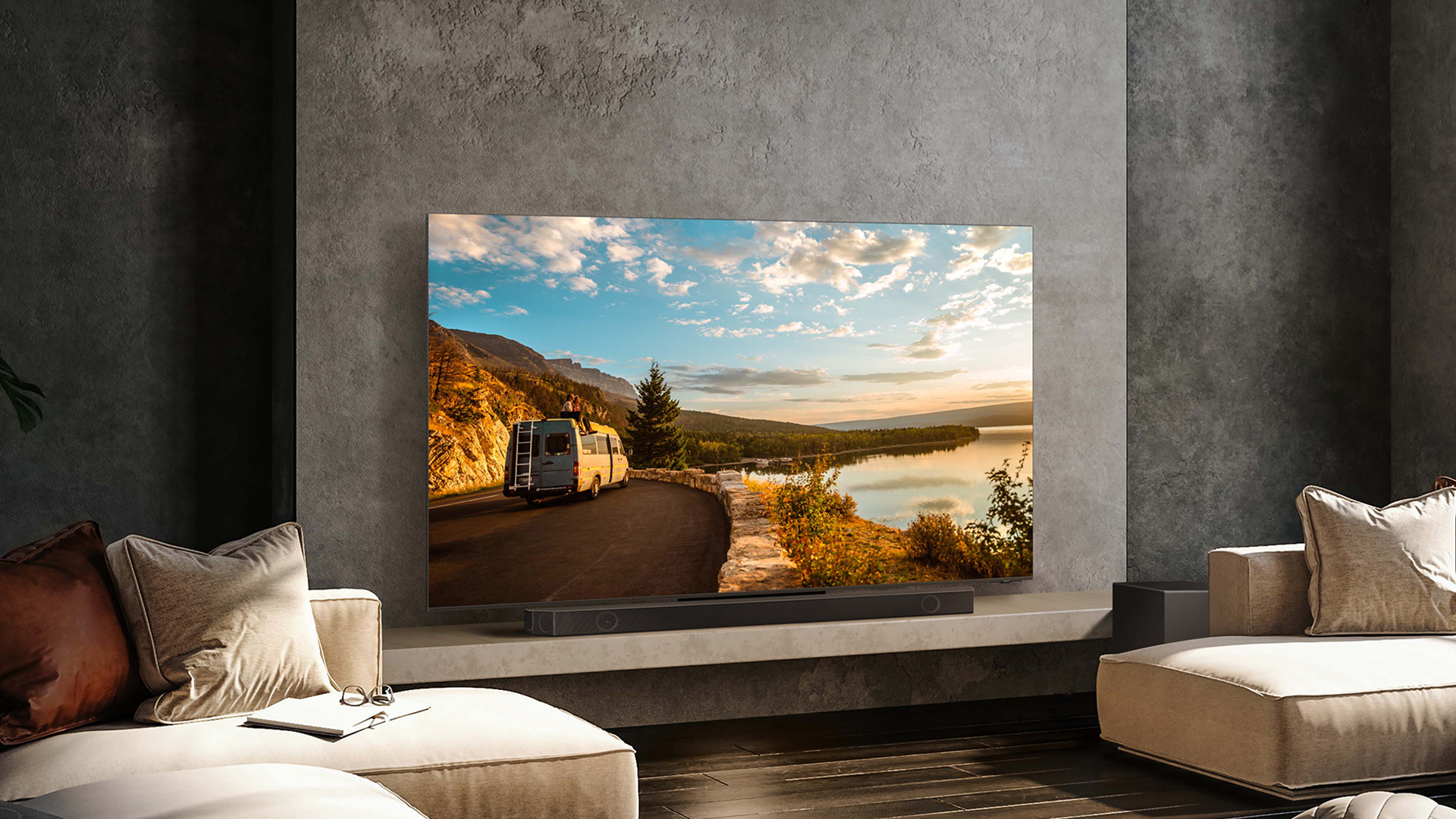
Sign up to get the BEST of Tom's Guide direct to your inbox.
Get instant access to breaking news, the hottest reviews, great deals and helpful tips.

Nick Pino heads up the TV and AV verticals at Tom's Guide and covers everything from OLED TVs to the latest wireless headphones. He was formerly the Senior Editor, TV and AV at TechRadar (Tom's Guide's sister site) and has previously written for GamesRadar, Official Xbox Magazine, PC Gamer and other outlets over the last decade. Not sure which TV you should buy? Drop him an email or tweet him on Twitter and he can help you out.
- Ryan EppsStaff Writer
-
Slayernet666 Personally will not be buying a Samsung tv again. - Shockingly short serviceable life, and no goodwill.Reply
I bought (what was a flagship model) 65" 8K QLED in March 2021.
It stopped working completely 3 years later. Samsung recommended I send to their authorised service partner (Martin Dawes) who charged me over £90 to investigate. The conclusion of the investigation was "Samsung no longer supply parts for this model".
From my perspective they did not need to charge me £90 to tell me that they cannot get parts for this TV.
....but they are keeping the cash anyway (despite my asking very nicely for a refund).
